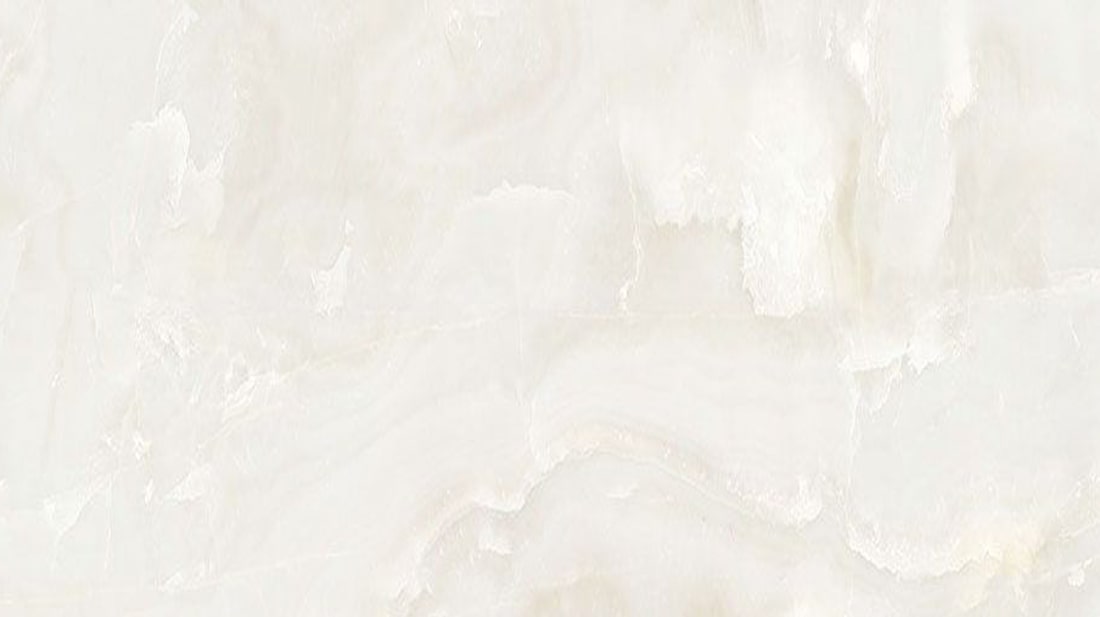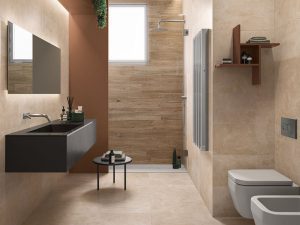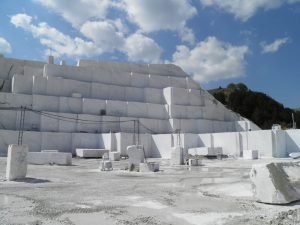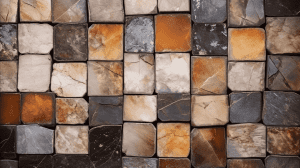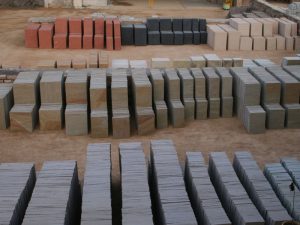Onyx is a type of quartz stone that is formed in beautiful concentric layers of different colors. Onyx’s stunning patterns and colors along with its physical properties, make this stone very unique and sought-after. It has many applications, particularly in the fields of jewelry making and interior design. In this article, we thoroughly examine onyx along with one of the most valuable and rare types of onyx stones called “Iranian Onyx” or “Persian Onyx”.
First things first: what is Onyx and what it is made of?
Onyx is a type of Chalcedony. Chalcedony is a mineral whose main chemical composition is Silicon Dioxide. Onyx is made of tiny quartz crystals that are compacted into a hard mass similar to other chalcedony stones.
Onyx’s chemical composition is quite simple and it mainly consists of oxygen and silicon atoms bonded together in a crystalline structure. However, it may contain some other minerals or impurities as well which gives this stone different colors and banding patterns. For instance, green onyx may contain chromium or nickel minerals or a red or brownish onyx stone may have iron oxide impurities. Onyx can be recognized by its unique and different banding pattern.
The physical characteristics of Onyx
- Color: There are different types of onyx with various colors such as white, green, red, brown, etc. The color of the bandings varies as well and includes different shades of red, brown, orange, blue, purple, yellow, and green.
- Transparency: onyx is normally translucent to opaque and lets the light pass through but not as much to see through the stone.
- Hardness: onyx is quite a hard material and can be polished to give a high shine. It has a hardness of approximately 6.5 to 7 on the Mohs scale. However, the hardness of the onyx that is used for construction is around 3 while the hardness of the onyx stone used in jewelry making industry is approximately 7.
- Density: the density of onyx is 2.6 to 2.7 g/cm3, relatively lower than quartz stones.
- Lustre: onyx has a waxy lustre and as previously mentioned, can be heavily polished to give a high shine; that is why it is one of the most sought-after stones for making pieces of jewelry and decorative items.
- Fracture: the fracture of onyx is conchoidal meaning it consists of numerous curved and smooth surfaces similar to the inside of a seashell. Also, its fraction coefficient is 1.530 to 1.543.
Types of onyx
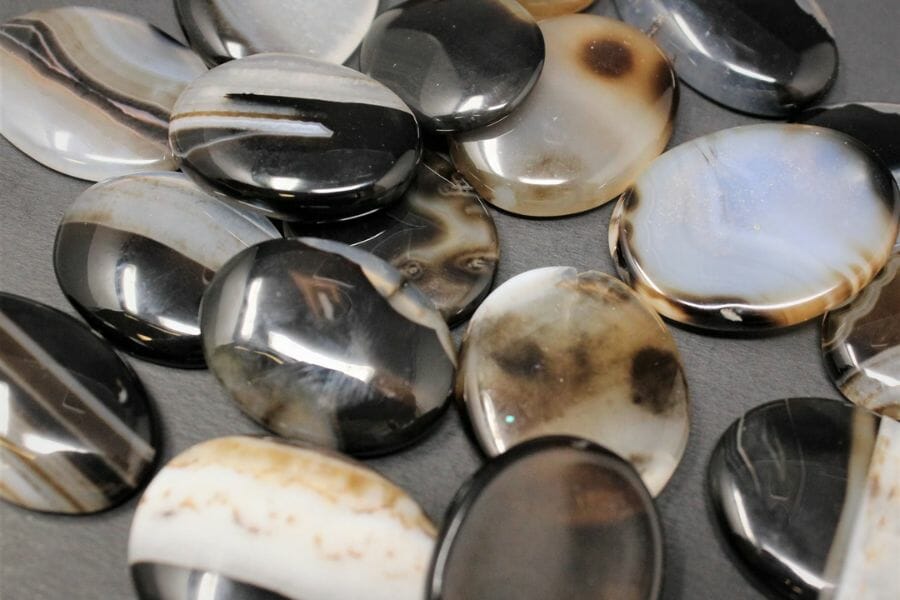
- Black onyx: black onyx has a black translucent background with white or colorful veins and sometimes no veins at all.
- White onyx: it is one of the rarest types of onyx. It has a white base color with dark-colored banding.
- Pink onyx: it is a unique natural stone with pink base color and commonly white-colored veins.
- Green onyx: green onyx is a type of onyx with a light or dark green base color and light-colored banding pattern. It consists of very fine grains of silica minerals.
- Red onyx: this variety of onyx consists of large areas of beige, red, or even yellow areas with random light-colored bandings and patterns.
- Yellow onyx: yellow onyx has a yellow background color with bold and thick black and dark-colored veins.
- Sardonyx: sardonyx is a variety of onyx and it has a reddish-brown color.
- Gray onyx: This type of onyx has a warm dark gray color similar to concrete along with light-colored veins.
- Blue onyx: blue onyx usually has a light blue base color with light-colored bandings and veins.
Cultural significance of Onyx
Onyx is an important stone in Greek, Indian, and Persian mythologies. The name of this stone “onyx” is derived from the Greek word “onux” meaning “fingernail” or “claw” which is believed to refer to this stone’s beautiful color and transparency and its similar hue to human skin and fingernail. Greeks and Romans used to carry a piece of onyx tone as it was believed to protect one from their enemies as it was associated with the Greek god of war, Ares. In Persian and Indian old tales, this stone is used in talismans for protection against evil and can cure people of diseases such as epilepsy.
What is Iranian Onyx?
Iran is one of the most significant producers of onyx in the world and is the home to different types of onyx such as white snow onyx, blue onyx, pink onyx, and gold onyx among which “White Snow Onyx” the most famous one. This very special variety of onyx is a rare and valuable type of white onyx extracted from quarries in Iran and it’s one of the most precious types of onyx on earth. It has a fine and delicate texture with a very clean and white background. Iranian White Onyx has the highest quality and purest texture with very few veins and stains; perhaps, that is why it’s called “White Snow Onyx”.
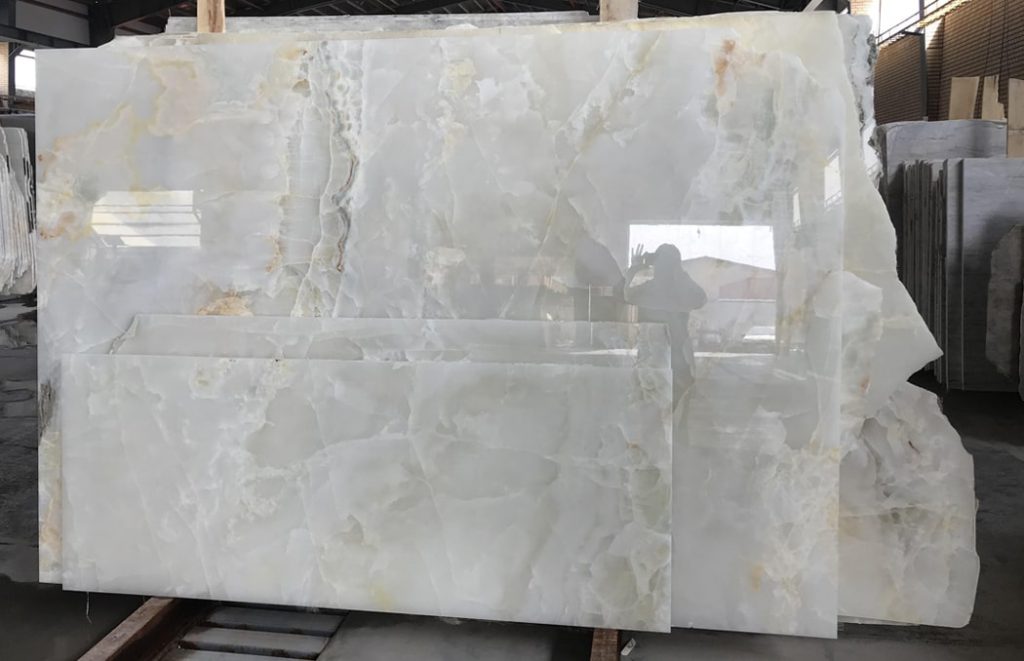
What are the characteristics of Iranian Onyx?
- High durability against temperature
- Exquisite beauty and translucency
- Low rate of water absorption
- Suitable for use in locations with low amounts of light
white Iranian onyx has a fragile and delicate texture and due to its fragility, the slabs of the Iranian white onyx are often processed and reinforced using special resin material to increase its resilience and get rid of micro-cracks on the surface of the stone.
Extraction of Iranian onyx
Iran is one of the few countries with a significant number of onyx quarries and mines. These quarries are scattered throughout the country but are mostly found in the provinces of Azerbaijan Sharghi, Khorasan, Kerman, and Kurdistan. In these quarries, onyx stone is usually extracted using techniques such as underground mining or open-pit mining and sent to factories as coups of stones. In the factory, Iranian onyx is cut using wire saw cutting method in slabs or tiles depending on the use and the customers’ orders. Then they are polished using polishing and grinding wheels and then they go into a series of finishing processes such as etching or sandblasting and are reinforced with materials like Epoxy Resin to be prepared for use in different areas.
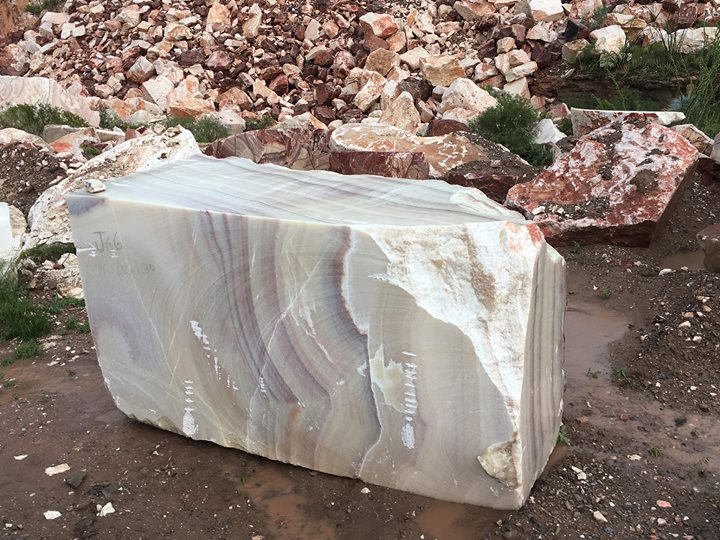
Applications of Iranian Onyx stone
- facade and exterior view.
Iranian Onyx is a stunning stone with unique patterns and bandings; that’s why many people consider using this stone as a façade and exterior view of the building; however, onyx is not very resistant to weathering and can easily get damaged as a result of being permanently exposed to air, rain, and pollution. Rather, it’s better to use this stone in the interior design of buildings.
- staircases
Iranian Onyx is a relatively heavy stone; therefore, its application in staircases is somehow limited but still, if possible, it is a gorgeous stone particularly if it’s used combined with other materials like wood.
- hall or lobby floor
Using Iranian onyx as floor stone brings elegance and shine to the space. Besides beauty, it also has a low rate of water absorption and it’s easy to clean. In general, onyx does not absorb heat and light; therefore, the onyx floor stays cool and it’s a suitable choice for places with hot climates.
- luxury bathrooms
You can use Iranian onyx in your bathroom in areas like bathroom walls, sink, and bathtub. This stone makes the bathroom look brighter with lots of light and adds a little bit of texture and diversity to the bathroom space.
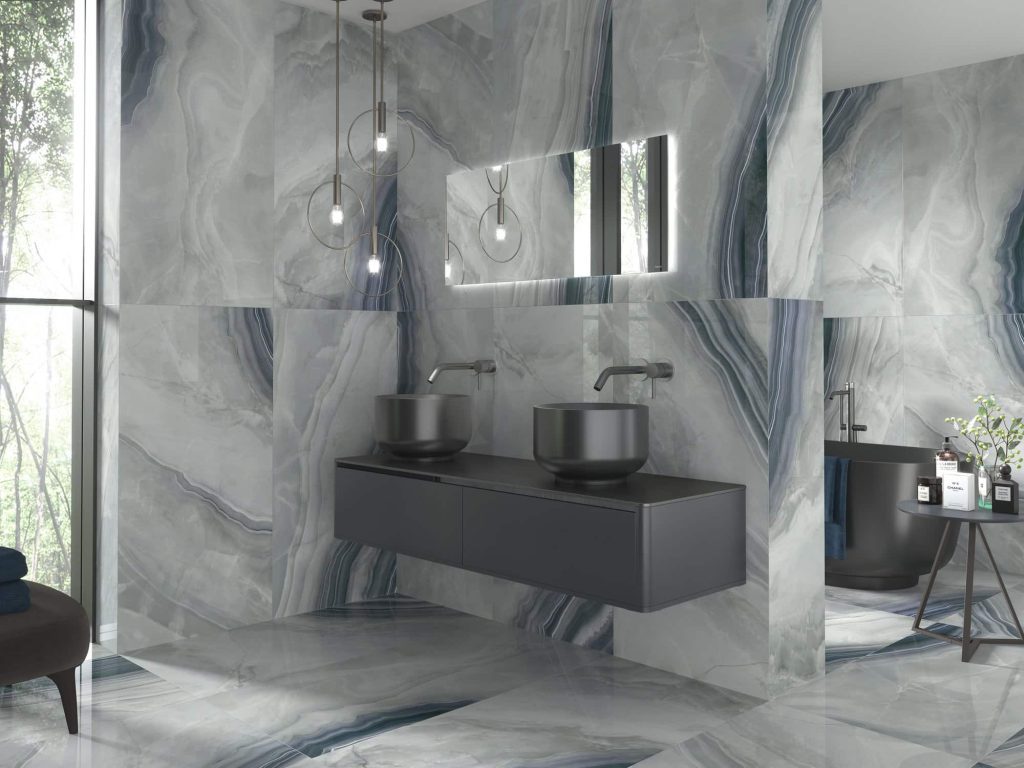
- counter table reception
One of the most popular uses of Iranian onyx is as the counter table in the kitchen. This stone reflects the light into the kitchen and gives out a natural and organic feeling to the environment.
- Jewelry making
Iranian onyx can make beautiful and durable jewelry stones. As previously mentioned, onyx’s hardness is 7 which means that they are resistant to scratches, chips, and physical blows from everyday use.
The economic value of Iranian onyx
Iranian onyx has a noticeably high economic value. There are several reasons behind its high price. The first one is its beauty. Iranian onyx’s beauty is unmatched and its random and delicate patterns and bandings, make this stone very unique and visually pleasing. Another one is its rarity. In general, onyx stone is rare and it’s not very common to find a pure and high quality of this stone. Another reason is its durability. Iranian Onyx can tolerate wear and tear and its high level of hardness makes it a suitable option for architectural and construction purposes. The fourth and final reason behind the high financial value of Iranian onyx is its cultural and historical significance and its association with spiritual beliefs which makes onyx a very popular stone for jewelry making.
Iranian Onyx vs Marble: what’s the difference?
Many people assume that Iranian onyx and marble are the same but they are different. At first glance, they look very similar but onyx is significantly more translucent than marble and has more distinctive patterns and bandings. In addition, they have different chemical composition. Marble is composed of calcite or dolomite but onyx is mainly made of Calcium Carbonate.
End note
Iranian onyx is a rare and unique type of onyx stone that can bring light, beauty, and delicateness to every environment in which it’s used. Although it can be very expensive due to its rarity, Iranian onyx’s distinctive color and patterns along with some other characteristics such as color durability, polishability, and high resistance against water and scratch make this stone a very good option for anyone who’s looking for a magnificent but also durable stone.
References: GeologySciences
